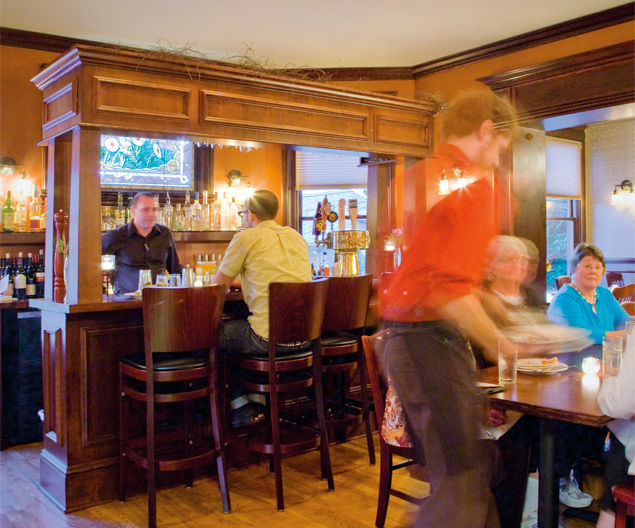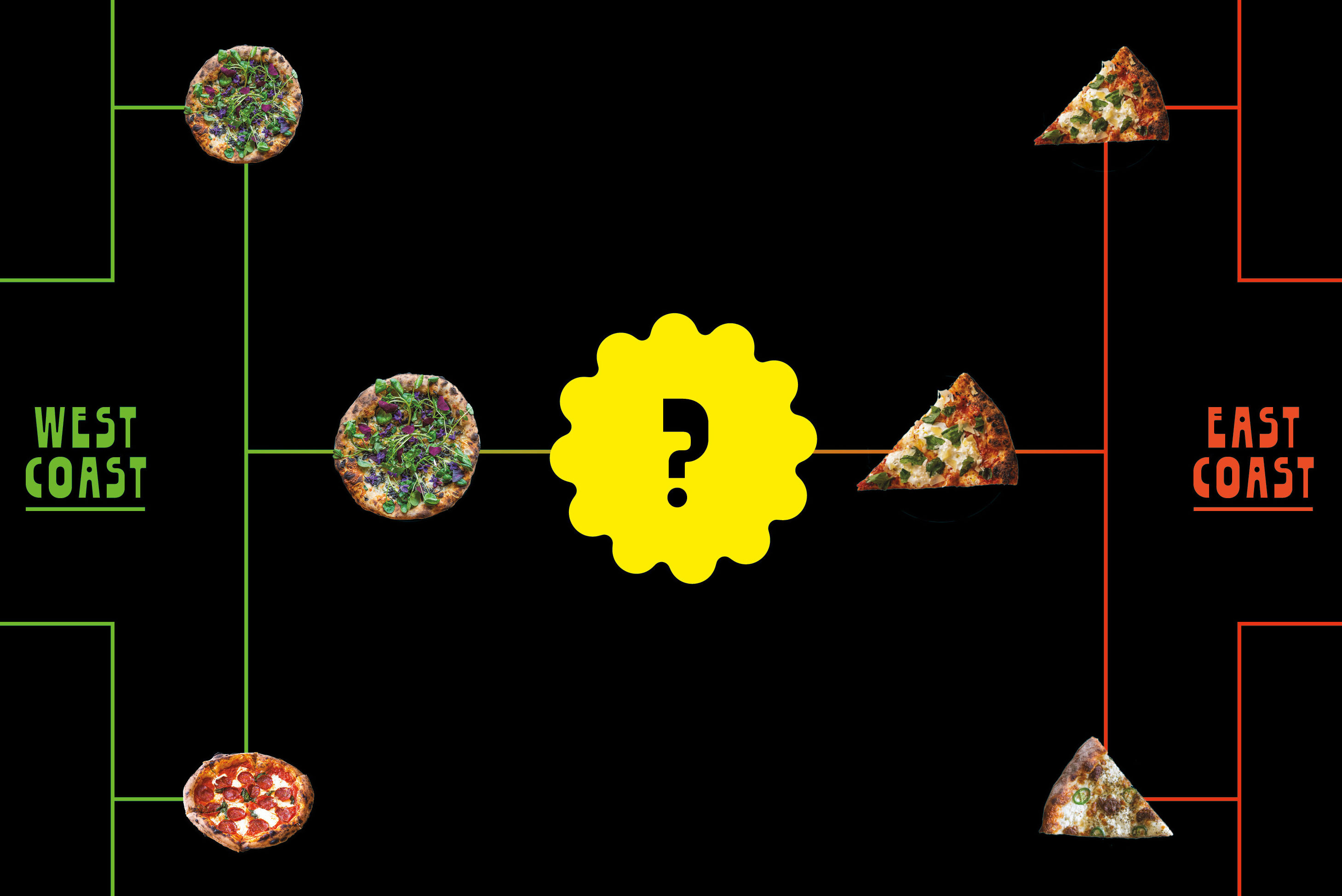Cursed Kitchen?

Image: Steven Scardina
THE FIRST FEW TIMES I ate at Belly Timber, as soon as I entered the foyer I immediately asked to be seated outside. There’s something about that house—the wooden staircase to the right of the entryway that leads to nowhere in particular; the emptiness of the dining room, both in terms of people and the number of tables; the stodginess of the wainscoting and the olive-and-gold wallpaper—that isn’t exactly inviting. Not that the patio offers a more glamorous setting; it’s just steps away from noisy, four-lane SE Hawthorne Boulevard. Only when the leaves on the trees began to turn did I actually eat inside at Belly Timber. But while I found that the cold weather made the dark, polished wood and the candlelit dining room seem considerably more appealing, the place still felt lonely to me.
Maybe it’s the building’s curse that I’ve been picking up on. Each quadrant of the city seems to have at least one restaurant space that’s continually opening and closing: One minute it’s Joe’s Diner, the next it’s Le French Bleu. Before Belly Timber arrived, Chef Tucker’s Patisserie paid rent here for a year or so, and prior to that the vegan restaurant Calendula set up shop for a while before its owner (rumor has it) made a hasty exit.
Could Belly Timber overcome the house’s troubled past? Judging by the scarcity of customers, I wasn’t so sure. But I’ve always believed a restaurant’s success is determined by the quality of its food (that, and sound financial management). And so far, the meals I’d eaten outside had impressed me. Chef David Siegel, formerly the sous-chef at Meriwether’s under Tommy Habetz, serves a house-made charcuterie plate that, for some time, was my favorite in the city. And a surprising combination of grilled cuttlefish, kohlrabi, capers, endive, and a warm bacon vinaigrette struck me as one of the more creative appetizers I’d enjoyed in a while. Plus, I liked the fact that the eclectic menu (which explains that “belly timber” is Victorian slang for “food of all sorts”) offered both half and full portions of most entrées.
Yet on the momentous occasion of my first dinner inside the belly of this particular beast, I was somewhat disappointed. A golden, deep-fried goat-cheese fritter with hunks of incredibly sweet watermelon was, unfortunately, set atop a bed of large, tough, bitter leaves of mizuna, a delicate green that’s best when harvested young, in the middle of summer. However, a second appetizer of perfectly cooked (as in nearly raw) shrimp, sweet corn, bits of smoky pork belly, and a smattering of steamed Swiss chard served with grilled white polenta tasted like the last days of summer even in October.
Then came the entrées. Handmade pierogi stuffed with lovely pine-nut basil butter and creamy ricotta were enveloped by an unpleasantly chewy dough. And my first bite of a grilled bavette steak (an underutilized cut of “flap meat” taken from the less tender sections of the short loin muscle of a cow) topped with demi-glace butter tasted so foul I had to spit it out. Whether the butter was rancid or the meat had gone bad, I couldn’t tell—both had an incredibly off-putting flavor to me and my dining companion. I attempted to cut another piece, just to be sure, but the meat was so tough and gristly I lost my patience. (I suspect the toughness owed to the fact that flap meat greatly benefits from a long period of marinating and tenderizing—a step that, as far as I could tell, had not been practiced here.) The waiter was kind enough not to charge us for our troubles.
During my next meal, I tended to stick with vegetables, starches, and fish, a choice that considerably lightened my mood after the steak debacle. I found a baked egg with tender lentils and prosciutto so comforting I was tempted to order several more, and it inspired me to make my own baked eggs the next morning. A side of fries with luscious bone-marrow aioli seemed to me the perfect post-work snack. And a roasted half-chicken with farro and cured olives constituted a perfectly serviceable fall meal.
To me, this was all honest food that, at times, could have benefited from a little more technique or finesse. But I could begin to see the appeal, especially for those who live nearby and want something more than the bad pizza, pub fare, and greasy Thai that make up the food scene along this stretch of Hawthorne. I could see Belly Timber becoming more of a neighborhood restaurant than a culinary destination. But then, I live in the neighborhood, and I’m not convinced I’ll be back.




